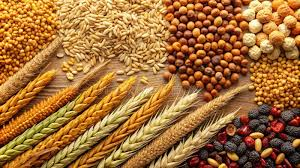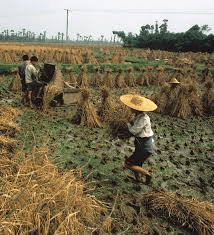Cereal crops are a type of grass cultivated for their edible seeds, known as grains. These crops play a vital role in global agriculture, providing food for both humans and animals. Cereal crops include staples like rice, wheat, corn, and barley.
Understanding cereal crops is essential for farmers, agriculturalists, and anyone interested in food production. This article will cover the importance of cereal crops in agriculture, types of cereal crops, their nutritional value, and best cultivation practices.
Importance of Cereal Crops in Agriculture
Cereal crops hold significant importance in agriculture for several reasons:
Major Food Source
1. Global Staple Food: Cereal crops are a primary source of energy for billions of people worldwide. They provide essential carbohydrates that fuel daily activities.
2. Food Security: The widespread cultivation of cereal crops contributes to food security, ensuring that communities have access to necessary nutrition.
Economic Value
1. Farm Income: Cereal crops often represent the majority of a farmer’s income, especially in developing countries. Successful harvests can lead to financial stability for farming families.
2. Trade Opportunities: Countries that produce surplus cereal crops can export them, contributing to the global economy.
Livestock Feed
1. Animal Nutrition: Many cereal crops, such as corn and barley, are crucial for livestock feed, supporting the meat and dairy industries.
2. Sustainable Practices: Using cereal crops as feed promotes sustainable agricultural practices, as it can reduce the need for additional feed sources.
Crop Rotation and Soil Health
1. Soil Enrichment: Cereal crops can improve soil health through crop rotation. They help prevent soil erosion and maintain soil structure.
2. Nutrient Management: Rotating cereal crops with legumes can enhance soil fertility by adding nitrogen back into the soil.
Types of Cereal Crops

Cereal crops are categorized into several types based on their characteristics and uses. Here are some of the most common types:
1. Rice
1. Description: Rice is a staple food for more than half of the world’s population, particularly in Asia.
2. Growing Conditions: It thrives in warm, wet climates and is often grown in flooded fields called paddies.
2. Wheat
1. Description: Wheat is one of the most widely cultivated cereal crops and is used to make flour, bread, and pasta.
2. Growing Conditions: It prefers temperate climates and well-drained soils.
3. Corn (Maize)
1. Description: Corn is a versatile crop used for food, animal feed, and biofuel.
2. Growing Conditions: It requires warm temperatures and fertile soil to grow effectively.
4. Barley
1. Description: Barley is often used in brewing and animal feed. It has a high fiber content and can be used in soups and stews.
2. Growing Conditions: Barley grows well in cooler climates and can tolerate poor soils.
5. Oats
1. Description: Oats are primarily grown for animal feed but are also popular in human diets for their health benefits.
2. Growing Conditions: They thrive in cooler, moist environments.
6. Sorghum
1. Description: Sorghum is a drought-resistant cereal crop that is used for food, animal feed, and biofuels.
2. Growing Conditions: It grows well in arid regions and poor soils.
Read Also: Importance of a Sick Bay in a Ruminant House
Nutritional Value of Cereal Crops

Cereal crops are not just a source of energy; they also provide essential nutrients:
1. Carbohydrates
1. Energy Source: Cereal crops are rich in carbohydrates, providing a quick source of energy for daily activities.
2. Dietary Fiber: Many cereals contain dietary fiber, which aids in digestion and helps maintain a healthy weight.
2. Proteins
1. Amino Acids: While cereals are not as rich in protein as legumes, they still provide essential amino acids needed for body functions.
2. Complementary Proteins: Combining cereals with legumes can create a complete protein source.
3. Vitamins and Minerals
1. B Vitamins: Cereal grains are a good source of B vitamins, including thiamine, riboflavin, niacin, and folate, which are essential for energy metabolism.
2. Minerals: They provide important minerals such as iron, magnesium, and zinc, which are vital for various bodily functions.
4. Antioxidants
1. Health Benefits: Many cereals contain antioxidants that help protect the body from oxidative stress and may reduce the risk of chronic diseases.
2. Whole Grains: Whole grain cereals are particularly rich in antioxidants compared to refined grains.
Cultivation Practices for Cereal Crops
Successful cultivation of cereal crops requires careful planning and implementation of best practices. Here’s a step-by-step guide:
1. Soil Preparation
1. Testing Soil: Start by testing the soil to determine its pH, nutrient levels, and texture. This information will guide fertilizer and amendment decisions.
2. Tilling: Prepare the soil by tilling to break up compacted layers and create a fine seedbed. This improves aeration and drainage.
2. Seed Selection
1. Choosing Varieties: Select high-quality seeds that are suitable for your climate and soil conditions. Consider disease-resistant varieties to minimize crop loss.
2. Seed Treatment: Treat seeds with fungicides or insecticides to protect against pests and diseases.
3. Planting
1. Timing: Plant seeds at the right time based on the local climate and the crop type. Most cereals thrive in warm conditions.
2. Spacing: Follow recommended planting densities for each crop to ensure adequate light, water, and nutrients.
4. Irrigation and Water Management
1. Water Needs: Monitor soil moisture levels and provide irrigation as needed, especially during dry periods. Most cereals require consistent moisture during germination and early growth.
2. Irrigation Methods: Use efficient irrigation methods like drip or sprinkler systems to reduce water waste.
5. Fertilization
1. Nutrient Requirements: Based on soil tests, apply fertilizers to provide necessary nutrients for healthy growth. Focus on nitrogen, phosphorus, and potassium.
2. Timing and Method: Apply fertilizers during planting and at key growth stages, using methods like broadcasting or side-dressing.
6. Pest and Disease Management
1. Monitoring: Regularly inspect crops for signs of pests and diseases. Early detection is crucial for effective management.
2. Control Measures: Implement integrated pest management (IPM) strategies, including biological controls, resistant varieties, and chemical treatments as a last resort.
7. Harvesting
1. Timing: Harvest cereal crops when they are fully mature, usually when the grains have hardened and the moisture content is low.
2. Methods: Use appropriate harvesting methods, such as mechanical harvesters for large fields or manual harvesting for small plots.
8. Post-Harvest Handling
1. Cleaning and Drying: After harvesting, clean the grains to remove dirt and debris, then dry them to the recommended moisture content to prevent spoilage.
2. Storage: Store grains in cool, dry conditions to maintain quality and prevent pests.
Read Also: Stocking Management for Ruminant Animals
Harvesting Techniques

Harvesting is the critical process of collecting mature cereal crops. It can be done manually or mechanically, depending on the scale of production and the type of crop. Here are some common techniques:
Manual Harvesting
1. Definition: This involves using tools like sickles or scythes to cut down the crops by hand.
2. When to Use: Manual harvesting is often used for small-scale farms or when crops are in difficult terrain where machinery cannot operate.
3. Benefits: It allows for careful selection of ripe crops and minimizes damage to the grains.
Mechanical Harvesting
1. Definition: This method uses machines, such as combines, to harvest crops quickly and efficiently.
2. When to Use: Mechanical harvesting is ideal for large-scale farms, as it reduces labor costs and time.
3. Benefits: It increases the speed of harvesting, allowing farmers to cover larger areas in a shorter period.
Timing of Harvest
1. Indicators: Harvest when grains are mature, usually when the plants turn golden brown, and the grains are hard.
2. Moisture Content: Aim for a moisture content of about 14% to 18% for optimal storage without spoilage.
Post-Harvest Processing
After harvesting, proper post-harvest processing is essential to maintain the quality of cereal crops. This includes cleaning, drying, and storing the grains. Here’s a step-by-step guide:
** Cleaning**
1. Purpose: Remove impurities like dirt, stones, and damaged grains to improve quality.
2. Methods: Use air blowers, sieves, or cleaning machines to separate unwanted materials from the harvested grains.
Drying
1. Importance: Reducing the moisture content prevents spoilage and mold growth.
2. Methods:
i. Sun Drying: Spread grains on a clean surface under the sun until they reach the desired moisture level.
ii. Mechanical Dryers: Use heated air to quickly dry grains, ensuring uniform moisture content.
Storage
1. Conditions: Store grains in cool, dry environments to prevent pests and spoilage.
2. Containers: Use airtight containers, silos, or grain bins to protect against moisture and insects.
3. Regular Checks: Inspect stored grains periodically for signs of pests or spoilage.
Challenges in Cereal Crop Production
Cereal crop production faces several challenges that can impact yield and quality. Understanding these challenges can help farmers adopt better practices.
Climate Variability
1. Impact: Changes in temperature, rainfall, and extreme weather events can affect crop growth and yield.
2. Adaptation: Farmers can use drought-resistant varieties and implement water conservation techniques.
Pests and Diseases
1. Risks: Insects, fungi, and bacteria can damage crops and reduce yields.
2. Management: Implement integrated pest management (IPM) strategies to monitor and control infestations.
Soil Degradation
1. Causes: Overuse of land, erosion, and loss of soil fertility can lead to reduced productivity.
2. Solutions: Practice crop rotation, cover cropping, and organic amendments to maintain soil health.
Economic Factors
1. Market Fluctuations: Prices for cereal crops can be volatile, affecting farmers’ income.
2. Cost of Inputs: Rising costs of seeds, fertilizers, and machinery can strain budgets.
Access to Technology
1. Limitations: Many smallholder farmers lack access to modern agricultural technology, impacting productivity.
2. Solutions: Promote training and resources to help farmers adopt new technologies and practices.
Infrastructure Issues
1. Transportation: Poor infrastructure can hinder access to markets, affecting sales and income.
2. Storage Facilities: Lack of proper storage can lead to post-harvest losses, impacting profitability.
Cereal crops are essential to global agriculture, providing vital food sources, economic value, and contributing to livestock feed. Understanding the types of cereal crops, their nutritional value, and best cultivation practices can help farmers and agriculturalists make informed decisions.
By following effective cultivation methods and proper post-harvest handling, we can ensure a sustainable supply of cereal crops for future generations. With the right practices, cereal crops can continue to be a cornerstone of food security and nutrition worldwide.
Read Also: The Impact of Inefficient Waste Management on Oceans
Frequently Asked Questions
We will update this section soon.

